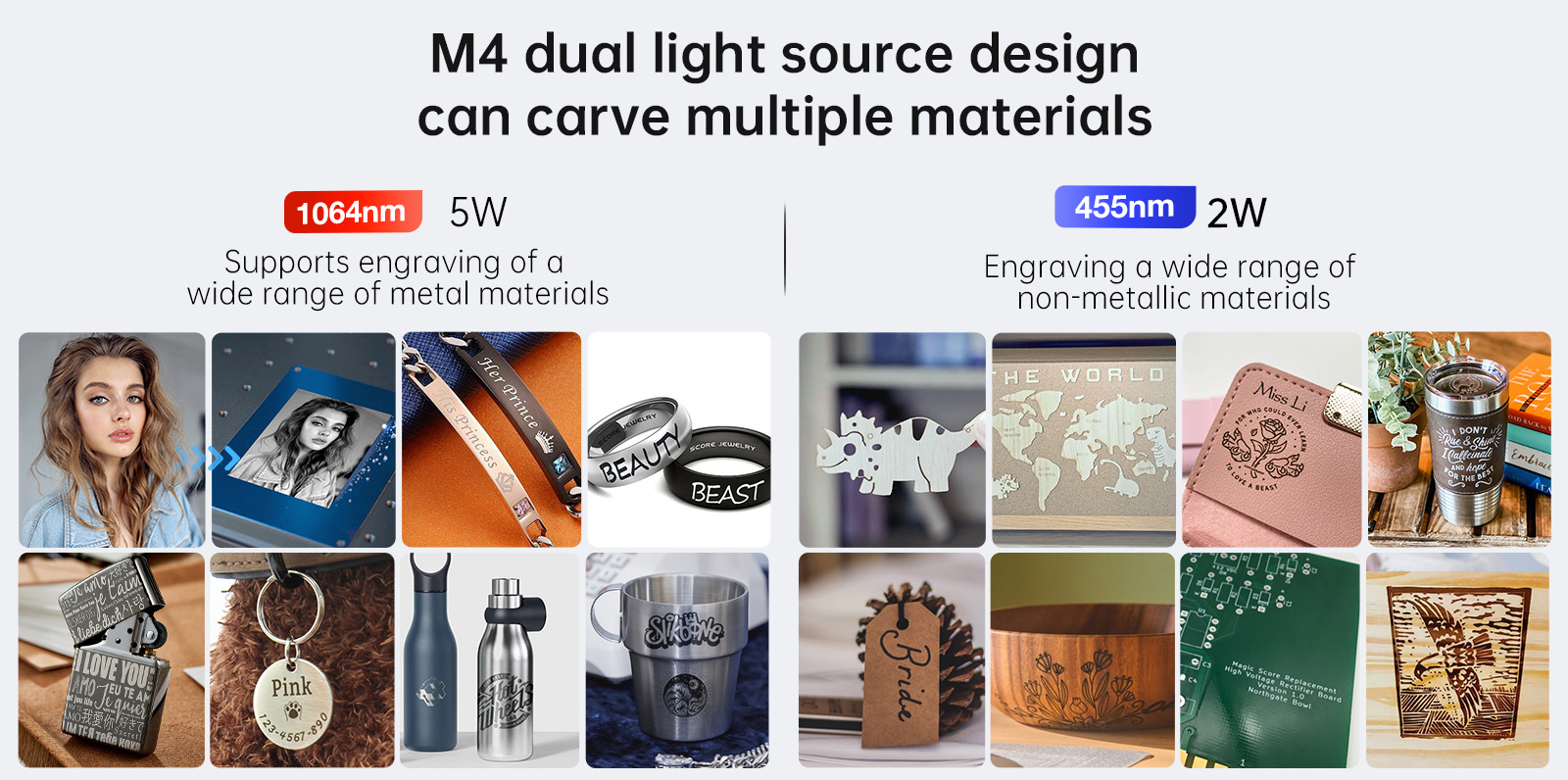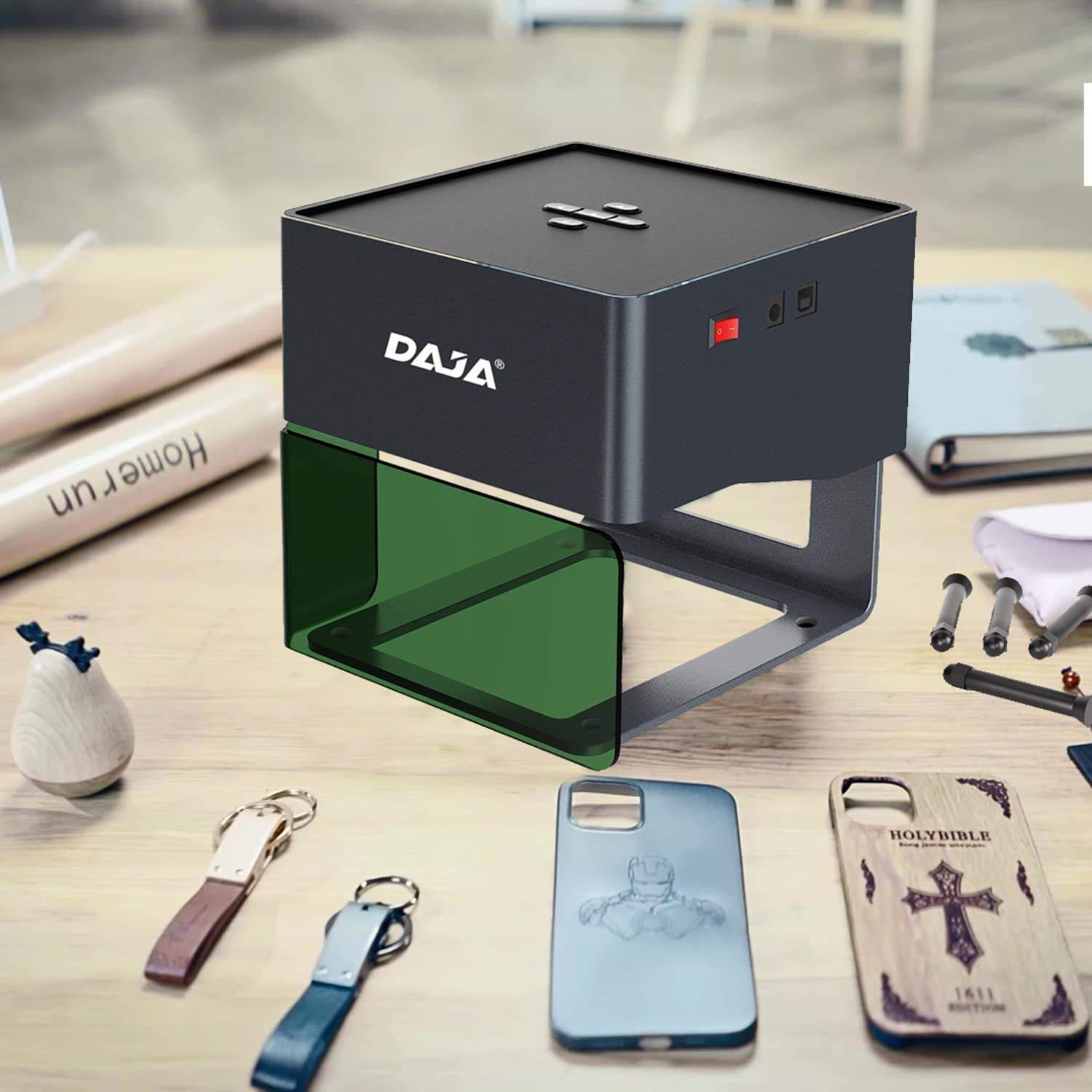News Center
What Materials Can a Laser Engraver Engrave?
Laser engraving is a versatile technology that allows for precise marking on various materials. Whether you're looking to personalize jewelry, create custom gifts, or produce intricate artwork, understanding which materials are compatible with laser engraving is crucial. Different types of laser engravers work best with specific materials, so choosing the right machine is essential for optimal results.
Types of Laser Engravers
Different laser engraving machines use varying technologies suited for specific materials:
| Laser Type | Best For | Limitations | Laser Type |
CO2 Laser Engravers | Wood, acrylic, leather, paper, rubber, some plastics | Not suitable for metals without coatings | CO2 Laser Engravers |
Diode Laser Engravers | Wood, leather, thin acrylic, paper | Slower speed, struggles with thick or dark materials | Diode Laser Engravers |
Each type excels at engraving different materials, so selecting the right machine depends on your intended projects.
Best Materials for Laser Engraving
1. Wood
Wood is one of the most popular materials for DIY laser engraving. Different types, such as plywood, MDF, bamboo, and hardwood, produce distinct engraving effects.
✔️ Great for personalized signs, coasters, and decorative items
✔️ Darker woods create high-contrast engravings
2. Metal
Metals like stainless steel, aluminum, brass, and titanium require a fiber laser engraver for deep marks or a CO2 laser with special coatings.
✔️ Ideal for jewelry, tools, and industrial part marking
✔️ Permanent, high-precision engravings
3. Leather
Genuine leather works well with CO2 and diode lasers, producing beautiful burns with crisp details.
✔️ Perfect for wallets, belts, and custom accessories
✔️ Avoid artificial leather, as it may release toxic fumes
4. Acrylic
Acrylic provides a polished, professional look when engraved. Cast acrylic (not extruded) yields better clarity.
✔️ Used for awards, signage, and LED light displays
✔️ Two-tone acrylic enhances visibility
5. Paper & Cardboard
Laser engraving can create intricate paper designs without ink.
✔️ Ideal for wedding invitations, art projects, and prototyping
✔️ Burns may darken edges for a unique effect
6. Rubber & Silicone
Rubber stamps and silicone products can be laser engraved for custom branding.
✔️ Used for industrial marking and DIY seals

Materials That Should NOT Be Laser Engraved
Some materials release toxic gases or damage the laser engraving machine:
❌ PVC & Vinyl – Releases chlorine gas, harmful to health and machinery
❌ Coated Carbon Fiber – Contains dangerous resins
❌ Materials Containing Halogens (e.g., Teflon) – Produces corrosive fumes
❌ Certain Plastics – ABS, polycarbonate, and others can melt or emit toxins
Always check material safety before engraving!
What Can You Make with a Laser Engraver?
A laser engraving machine opens endless creative possibilities:
✔️ Personalized Jewelry – Add names, dates, or artwork to rings and pendants
✔️ Custom Gifts – Engrave wooden photo frames, wine glasses, or keychains
✔️ Art & Decor – Create detailed wall art, signage, or illuminated displays
✔️ Industrial Marking – Serial numbers, barcodes, and logos on metal parts
Whether you're a hobbyist or a professional, laser engraving offers unmatched customization for DIY projects and commercial applications.
Conclusion
Choosing the right material is key to successful laser engraving. While wood, metal, leather, and acrylic are excellent choices, avoid hazardous materials like PVC. With the right laser engraver, you can craft stunning personalized gifts, durable industrial markings, and artistic designs—just ensure compatibility for the best results!













